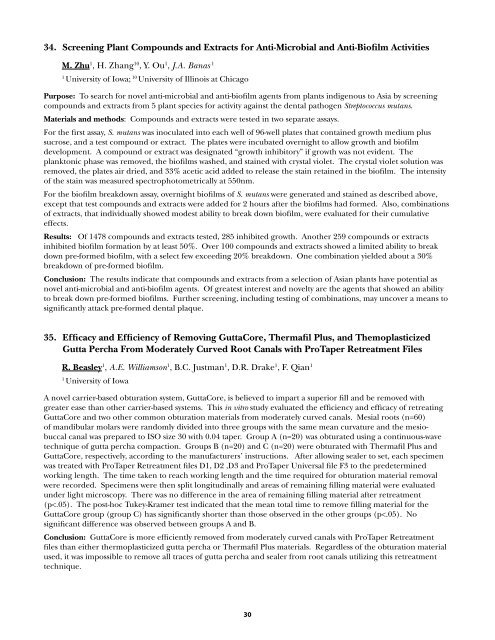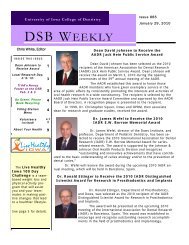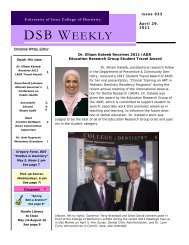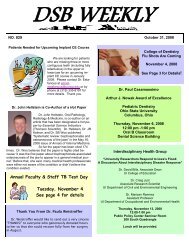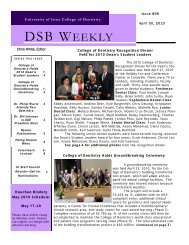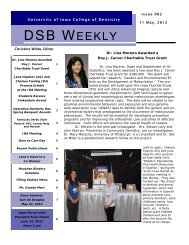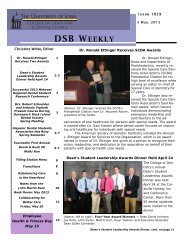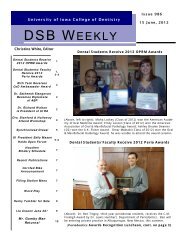Iowa Section of AADR - The University of Iowa College of Dentistry
Iowa Section of AADR - The University of Iowa College of Dentistry
Iowa Section of AADR - The University of Iowa College of Dentistry
You also want an ePaper? Increase the reach of your titles
YUMPU automatically turns print PDFs into web optimized ePapers that Google loves.
34.<br />
M. Zhu 1 , H. Zhang 10 , Y. Ou 1 , J.A. Banas 1<br />
1 <strong>University</strong> <strong>of</strong> <strong>Iowa</strong>; 10 <strong>University</strong> <strong>of</strong> Illinois at Chicago<br />
Purpose:<br />
compounds and extracts from 5 plant species for activity against the dental pathogen Streptococcus mutans.<br />
Materials and methods: Compounds and extracts were tested in two separate assays.<br />
S. mutans was inoculated into each well <strong>of</strong> 96-well plates that contained growth medium plus<br />
development. A compound or extract was designated “growth inhibitory” if growth was not evident. <strong>The</strong><br />
<strong>of</strong> the stain was measured spectrophotometrically at 550nm.<br />
S. mutans were generated and stained as described above,<br />
effects.<br />
Results: Of 1478 compounds and extracts tested, 285 inhibited growth. Another 259 compounds or extracts<br />
Conclusion: <strong>The</strong> results indicate that compounds and extracts from a selection <strong>of</strong> Asian plants have potential as<br />
35.<br />
Gutta Percha From Moderately Curved Root Canals with ProTaper Retreatment Files<br />
R. Beasley1 , A.E. Williamson1 , B.C. Justman1 , D.R. Drake1 , F. Qian1 1 <strong>University</strong> <strong>of</strong> <strong>Iowa</strong><br />
greater ease than other carrier-based systems. This in vitro<br />
GuttaCore and two other common obturation materials from moderately curved canals. Mesial roots (n=60)<br />
<strong>of</strong> mandibular molars were randomly divided into three groups with the same mean curvature and the mesiobuccal<br />
canal was prepared to ISO size 30 with 0.04 taper. Group A (n=20) was obturated using a continuous-wave<br />
GuttaCore, respectively, according to the manufacturers’ instructions. After allowing sealer to set, each specimen<br />
working length. <strong>The</strong> time taken to reach working length and the time required for obturation material removal<br />
Conclusion:<br />
used, it was impossible to remove all traces <strong>of</strong> gutta percha and sealer from root canals utilizing this retreatment<br />
technique.<br />
28 30


